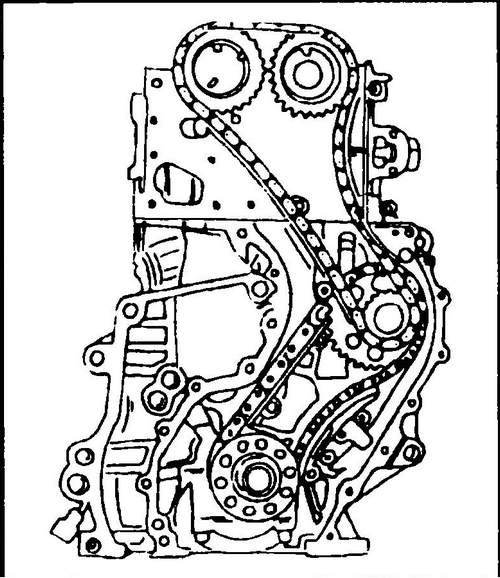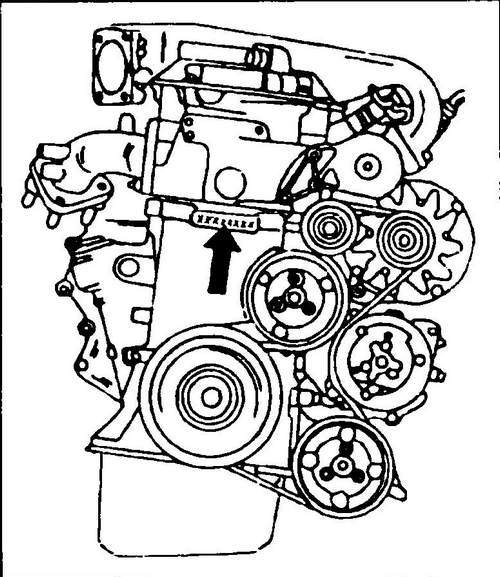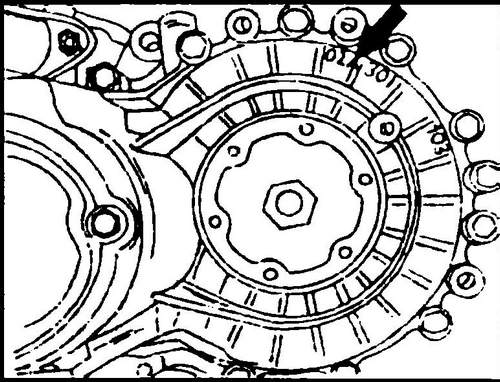Engine VR6 - 2.8 l
The following describes the VW VR6 engine model first released in 1996.
It is equipped with a new six-cylinder engine, which is known under the symbol "VR6". Due to the fact that this engine has significant differences from the classic both in-line and V-shaped designs, the description of this model is highlighted in a separate chapter. Although coded "AES" by Volkswagen, this engine is much better known by the "VR6" code. "VR6" means that the cylinders are arranged in a V-shape, although this is an in-line engine (type R) with six cylinders. Those. This engine is a compact inline engine with cylinders arranged in a V-shape at an angle of 15º. A feature of the engine is the arrangement of cylinders in one block (with one block head), unlike conventional V-engines, which use two cylinder blocks (and two block heads) connected to one crankshaft housing. Twelve vertical valves are actuated by two camshafts and located in a single cylinder head that sits above all six cylinders.
The bottom surface of the cylinder head is flat, i.e. there are no combustion chambers in the block head. The combustion chambers are made in the bottom of the pistons, at a certain angle to fit their location under the V-shape of the block. The forged crankshaft is supported by seven main bearings, it is equipped with twelve counterweights and a damper, which ensures smooth rotation.
The main shaft journals for each row of cylinders are offset by 22 mm. Relatively long connecting rods (164 mm) connect the crankshaft to the pistons, which have two compression rings and one oil scraper ring. Most Volkswagen T4 are equipped with a camshaft timing belt. In the VR6 engine, they returned to the chain drive, which is more reliable. The drive of both camshafts is not realized directly, but through an intermediate sprocket. On the same shaft on which the intermediate sprocket is mounted, there is a small sprocket through which (the second chain) drives both camshafts. Due to this design of the drive, the dimensions of both sprockets have decreased, which made it possible to make the block head more compact. On fig. 137 shows the chain drive device.
Rice. 137 Camshaft chain drive in the VR6 engine
Particular attention should be paid to the supply of the fuel mixture, since with the help of one block head it is necessary to provide fuel for two rows of cylinders.
Since the engine is cross-flow, the intake ports are located on one side and the exhaust ports on the other, which means that the air-fuel mixture enters three cylinders on one side and three cylinders on the other, and, in addition, all inlet pipes must be the same length. As a solution, a special air supply housing is used, located on top of the block head, from which there are separate intake manifolds to each cylinder. Three pipes go directly to the cylinders on the front side of the engine, and three other pipes are routed above the engine to supply air to the cylinders on the other side of the engine. Each intake manifold is equipped with a valve. The spark plugs are located on the outside of the cylinders. Despite all the tricks, there is always a difference between the compression ratio in the cylinder banks. This difference is compensated by the use of Bosch's Motronic electronic fuel injection system, which is equipped with knock sensors in each cylinder bank. As a result, the control microprocessor module of the system, which simultaneously controls the injection and ignition systems, coordinates the supply of fuel and ignition sparks in the cylinders of each row. In the car, VR6 engines are standardly equipped with a catalyst with a lambda probe (oxygen sensor). For a car, it is best to use lead-free gasoline with a minimum octane rating of 95. All technical specifications are shown in table No. 1.
Identification
The VR6 engine number is stamped on the front side of the cylinder block, i.e. from the side of the crankshaft damper (see Fig. 138).
Rice. 138 Engine number location VR6
The symbol of the engine is duplicated on the nameplate of the car.
An engine designation sticker with the engine serial number is also affixed to the valve cover of the block head. The gearbox code is marked at the point (1, see Fig. 139). At point (2), the transmission type is stamped - 02A. The gearbox code is repeated on the gearbox flange at the point shown in fig. 140. This number must be indicated when ordering spare parts and accessories.
Rice.
139 Location of symbols on the gearbox: 1 - symbol,
2 - type of gearbox
Rice. 140. The gearbox number is stamped on the gearbox flange



